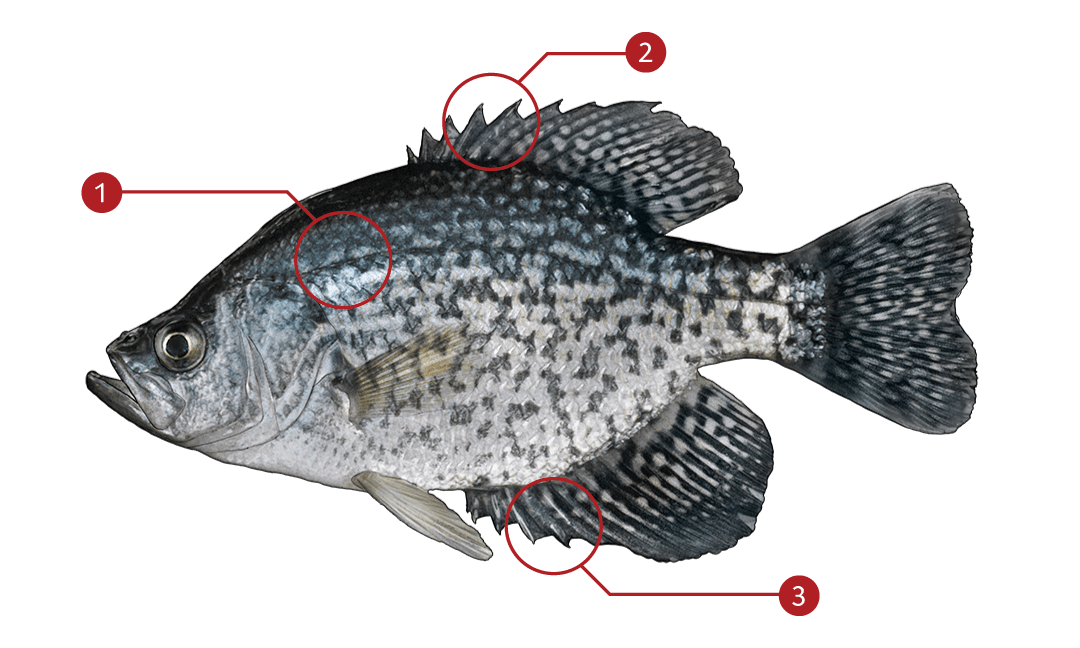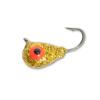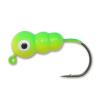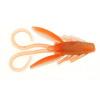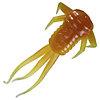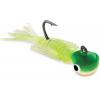BLACK CRAPPIE
How to identify a Black Crappie
The black crappie and the white crappie are most often confused with each other. Despite their common names, both species are the same color (dark olive or black dorsally with silvery sides) and both have spots on the sides.
However, you can easily identify the Black Crappie because the pattern of the spotting is distinctly different. In the black crappie the spots are irregular and scattered while in the white crappie the spots may be more vague and are clearly arranged into 7-9 vertical bars on the sides. Another distinction; the black crappie has 7-8 dorsal spines while the white crappie has only 6, the same number as in its anal fin. In body shape the black crappie’s is somewhat deeper than the white crappie.
SPAWNING TEMPERATURES
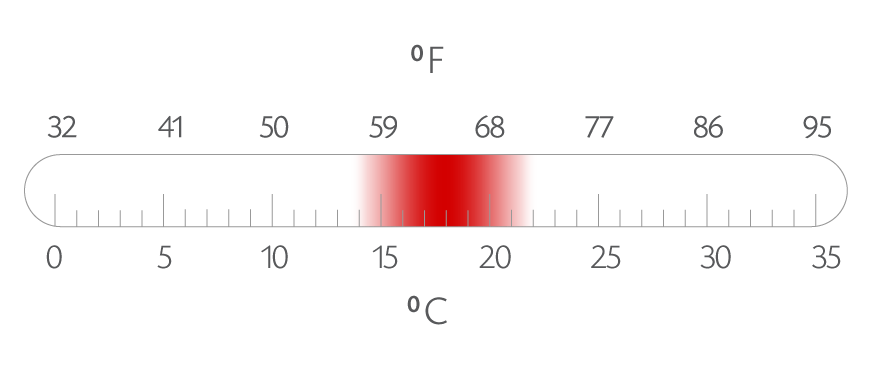
SPAWNING MONTHS

TARGET AREAS
|
|
Where to catch Black Crappie
There are different states where you can catch Black crappie. This fish species is native to most of the eastern half of the U.S., the black crappie has been so extensively transplanted that today it entirely blankets the U.S. and reaches up into southern Manitoba, Ontario and Quebec in Canada. It is only noticeably scarce in a swathe of the Midwest stretching from western Texas up through Nevada, Colorado, Utah, Wyoming, Idaho, and western Montana, and even these states have black crappies either along their borders or in limited internal areas.
The black crappie inhabits large ponds and shallow areas of lakes, with sandy or muddy bottoms and usually in areas of abundant vegetation. It requires a deeper, clearer, somewhat cooler habitat than does the white crappie.


